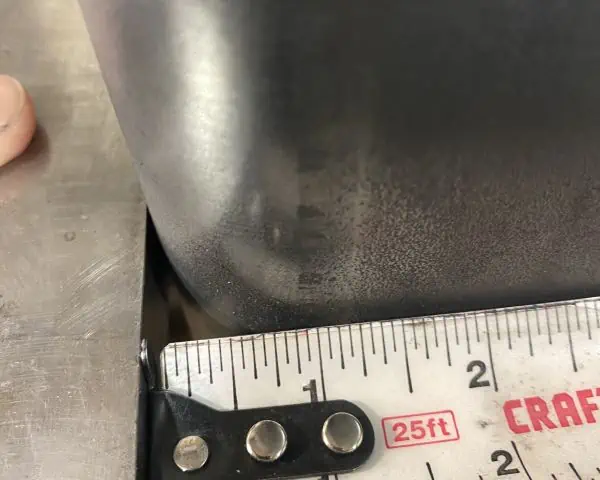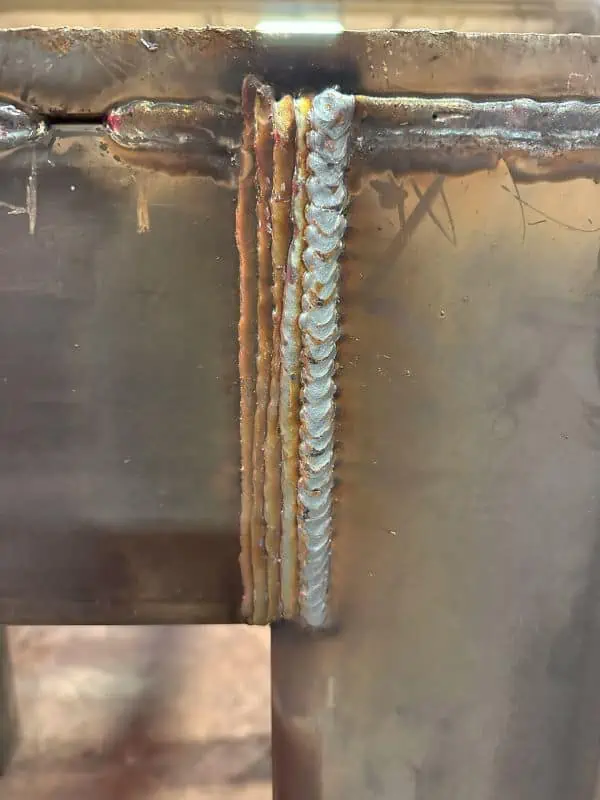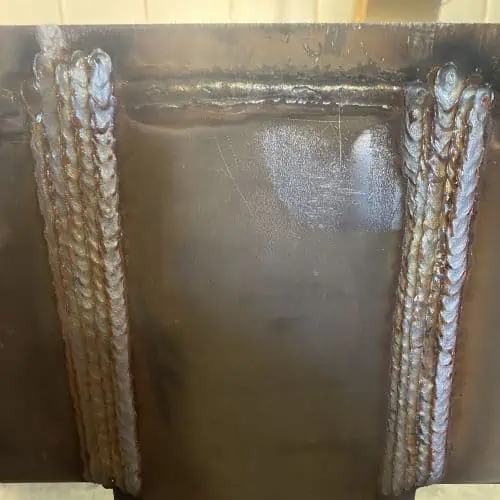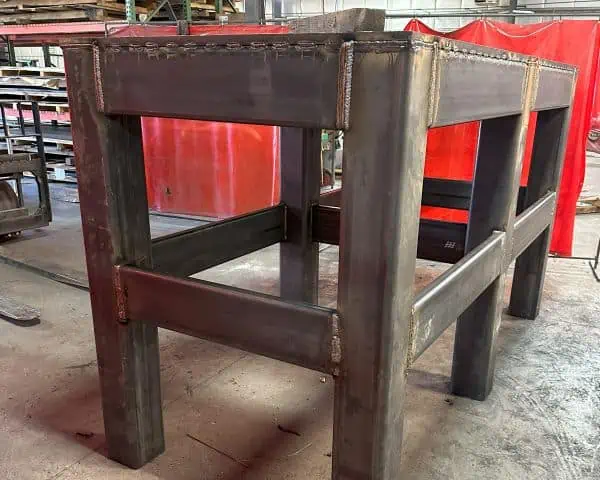Armes Precision, a leading machining, welding, and complex part manufacturing company based in Lynchburg, Virginia, recently tackled a highly challenging fabrication project involving a large steel apparatus composed of 8’ x 2’ steel tubes, 7’ x 7’ steel vertical posts, and 1 ¼-inch steel plates. Due to the sheer size of the apparatus, manual maneuverability was limited, necessitating the use of mechanical methods alongside forklifts or cranes for efficient handling.
To machine the steel plates effectively, Armes Precision utilized the Slugger large magnetic drill, a tool specifically designed for drilling into harder materials, creating deeper holes, and maintaining accurate alignment. The use of such a drill press was essential, considering its more powerful motor, longer drill travel, and the ability to streamline the machining process. As a top metal fabrication and custom parts manufacturing company, Armes Precision firmly believes in investing in the right tools for each job to ensure efficiency, prevent slowdowns, and mitigate safety hazards.
However, the most challenging aspect of this project lay in the precision welding process. Employing a full-penetration weld technique, where the joint’s root is completely fused, presented difficulties even for skilled welders. Moreover, the project’s complexity increased due to the vertical posts’ 1-inch radius. Accomplishing this weld required numerous weld passes and expertise in strategically “stacking the welds” based on the joint’s depth and contour. Notably, the cap necessitated five weld passes, while the welds beneath it involved an intricate process comprising twenty weld passes.
Even for experienced welders like those here at Armes Precision, stacking welds can be a challenging task due to several factors that impact the welding process and overall joint integrity. Here are some reasons why stacking welds can present difficulties:
- Heat Buildup and Distortion: Stacking weld passes involves repeatedly introducing heat to the same area of the joint. This prolonged exposure to heat can cause significant heat buildup, resulting in thermal expansion and contraction. The accumulated heat can lead to distortion, warping, and changes in the joint’s dimensions, making it more challenging to maintain the desired shape and alignment throughout the precision welding process.
- Control of Weld Pool and Fusion: When stacking welds, each pass must fuse properly with the previous ones to create a sound and structurally sound joint. Achieving consistent fusion between the weld passes can be demanding, particularly when dealing with intricate joint contours or hard-to-reach areas. Welders need to carefully control the weld pool size, shape, and penetration depth to ensure proper bonding and avoid defects like lack of fusion or incomplete joint penetration.
- Layer Thickness and Reinforcement: The thickness of each weld pass in a stacked weld is an important consideration. The welding experts of Armes Precision in Lynchburg, Virginia, need to ensure that the subsequent passes provide adequate reinforcement and strength to the joint. Determining the appropriate layer thickness and reinforcement requires a thorough understanding of the base material properties, welding technique, and joint design. Insufficient reinforcement can compromise the joint’s mechanical properties, while excessive reinforcement can lead to distortion or excessive heat input.
- Joint Accessibility and Positioning: In complex metal fabrication projects, joints may have restricted accessibility or require welding in confined spaces. Stacking welds in such areas can be particularly challenging, as limited access makes it difficult to manipulate the welding torch, maintain proper arc length, and achieve consistent weld bead placement. Welders may need to utilize specialized welding equipment, such as angled torches or mirrors, to overcome these challenges and ensure accurate and consistent stacking of welds.
- Welder Skill and Technique: Stacking welds demands a high level of skill and technique from the welders of Armes Precision. It requires precise control over parameters such as travel speed, arc length, filler metal deposition, and manipulation of the welding torch. Welders must possess the knowledge and experience to adjust these variables based on the joint’s depth, contour, and material thickness. The ability to stack welds effectively comes with practice and expertise, making it a challenging task for average welders or those with limited experience in complex fabrication projects.
Overall, the difficulty in precisely stacking welds lies in managing heat buildup, achieving consistent fusion, determining optimal layer thickness and reinforcement, working in confined spaces, and requiring skilled welding techniques. Overcoming these challenges demands expertise, experience, and meticulous attention to detail from the Armes Precision welder to ensure the integrity and strength of the stacked weld joint.
Armes Precision’s successful completion of this demanding weld-stacking fabrication project highlights our unwavering commitment to using the right tools for the job, utilizing expert welding techniques, and overcoming challenges to achieve superior results.
Armes Precision of Lynchburg, Virginia, has been stacking welds for better joint integrity since our founding in 1995. Our experienced technicians are specialists in the fields of Machining, Metal Fabrication, and Complex Part Assembly Services, creating customized prototype and production-quality parts that precisely meet your design requirements – always on time and within budget.
Contact Armes Precision for a fast, free quote from a leading Virginia welding and machining shop, and to learn more about our state-of-the-art fabrication facility in Lynchburg, VA. Call 434-237-4552 or visit ArmesPrecision.com/contact; let’s get started creating perfection together.
















